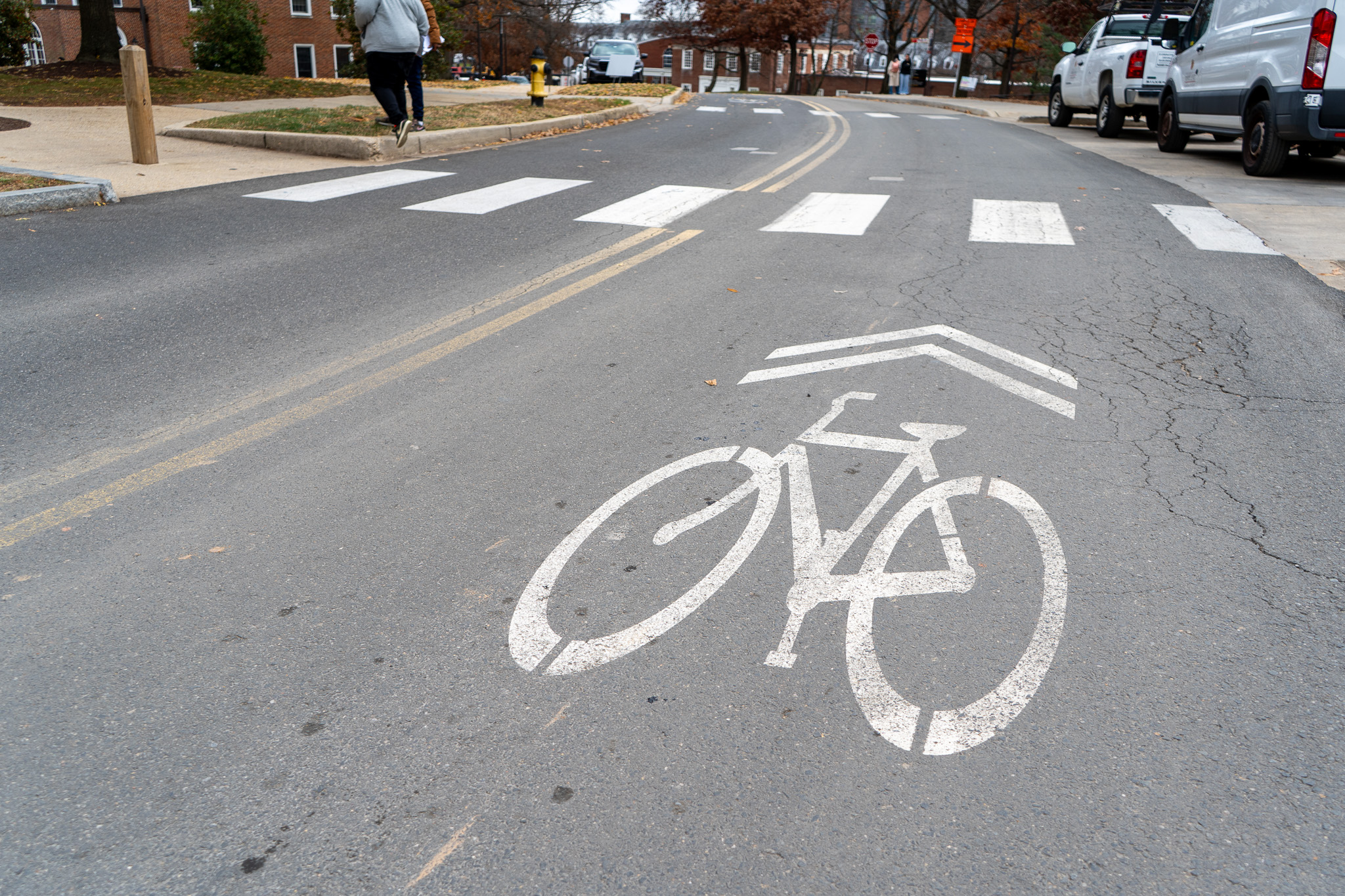The University of Maryland’s DOTS delayed seeking funding for the next phase of this university’s plan to construct bike lanes on campus until at least the spring.
The department instead plans to continue evaluating the feasibility of bike lanes on campus before applying to the Student Facilities Fund.
“We really want to have our ducks in a row when it comes to the design and where these bike lanes will be located,” David Allen, the Department of Transportation Services’ director, said.
Last March, DOTS was awarded $200,000 for the first phase of the Bikeways Project, which entails completing a feasibility study and 30 percent of a design for four bike lane segments.
When DOTS applies for the funding, it will be a “big ask,” Allen said. To make the application stronger, Allen said he wants to gather more information from the community, complete the bikeways feasibility study and conduct an additional study exclusively focused on crosswalks and intersections.
Students at this university have been calling for bike lanes on campus for many years.
Nick Webb, a 2022 graduate, founded Terps for Bike Lanes in 2020 after he was nearly sandwiched between two cars on Paint Branch Drive. He found solidarity on the issue with other bikers from this university on social media.
Webb and other students began conversations with DOTS, discussing ideas portrayed in the current Bikeways Project proposal.
“I only had like a year and a half before I would have graduated,” Webb said. “I understood that it was never gonna happen for me, but I was just trying to make it better for future generations.”
[UMD DOTS hopes new bike racks will alleviate overcrowded micromobility parking]
Micromobility vehicle use has increased rapidly in recent years. As sidewalks and roads become more crowded and less safe, students have seen a greater need for bike lanes.
“One thing that is quite inconvenient is that there’s basically no bike lanes at all. So you’re in mixed traffic which is very backed up,” Sourish Dey, a freshman civil engineering major who bikes on campus every day, said. “In some places there’s only sidewalks and going on those is quite tricky with the number of pedestrians.”
In October, DOTS hosted Safety Awareness Month and touted the Bikeways Project. The department’s employees hosted a launch event on Zoom and took students on walks around campus to collect feedback and ideas for the design.
The study is focusing on four new bike lane segments on Mowatt Lane, Presidential Drive, Paint Branch Drive and the existing shared use path between Paint Branch Trail and Stadium Drive.
The Bikeways Project has seen support from this university’s administration and student body.
“The bike lanes are going to be safer, and the safety of students is, I think, the top priority,” Student Government Association president Alexandra DeBus said. “I think it’s fabulous and I can’t wait to see the campus improve and institute a lot more.”
Shortly before Thanksgiving, Allen told student advocates that DOTS would be waiting until the spring, or next fall at the latest, to apply for the rest of the funding, pushing the possibility of construction further back.
[UMD DOTS leads bike, e-scooter tours around campus to promote safe riding practices]
Student advocates hoped the project would secure funding this semester, but said they understand the decision and are still optimistic about the project.
“It doesn’t surprise me that he wants to take the spring and the upcoming fall to hammer out the proposals because, to me, the amount of money that they would likely be asking for is a lot,” said Nick Marks, a junior secondary education and government and politics major and president of Terps for Bike Lanes. “I think that bikeways will get done.”
Work on planning the design and coordination between departments will continue with the existing funding, according to Carlo Colella, this university’s vice president and chief administrative officer.
Bicycle Friendly America, the League of American Bicyclists’ evaluation program, designated this campus “gold ” as of 2011 — a rating which was awarded to only 31 out of the 515 universities that were reviewed.
Allen and Colella have a shared goal to elevate that ranking to join the nine institutions that are designated “platinum” by building the four segments envisioned in the Bikeways Project design, which they envision to be built gradually.
“We’d like to deliver a lot of it soon, but we know that we’re going to deliver over time,” Colella said.
In a statement to The Diamondback last Thursday, Terps for Bike Lanes criticized the gold designation for the “incongruity between the certification and the current lack of temporary infrastructure.”
The university’s administration is always looking for immediate, small interventions that could improve infrastructure, Colella said. By next summer, Colella expects some areas of campus will have stretches of temporary dedicated bike lanes while plans are finalized.



